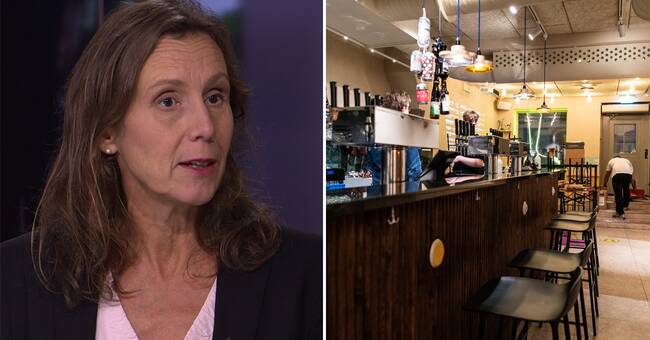In less than a week, the corona crisis has turned into pure corona panic for many.
It's about everyone who has a job and a company that is based on people being on the move.
Flights, taxis, hotels, restaurants, tourist attractions, shops.
The list can be made much longer in industries that were directly affected when the virus spread last winter, and which are also being hit hard now, when the restrictions are becoming tougher both abroad and here at home.
Last week's announcement from the government of a halt to alcohol sales after 10 pm made many despair.
On Monday, it became even worse with a ban on public gatherings with more than eight people, and the Prime Minister's call not to visit bars, shops, gyms and other places where you normally spend money that turns into people's salaries.
The spread of infection itself can reduce activities
Of the joyous performance that the Minister of Finance guessed planned for when she would report on Sweden's economic situation next time, only the introduction remained when it was time for the press conference today, the one about a stronger recovery than expected in the autumn.
The third quarter of the year exceeded expectations.
The second-quarter GDP race of 8.3 percent slowed and the economy grew instead by 4.3 percent in the third quarter compared to the second.
That is more than the government and many other assessors expected after the summer.
The industry has been in full swing in many places.
Truck manufacturer Volvo reported that transport movements at the end of September were back at the same levels as before the virus outbreak.
But now, halfway into the fourth quarter, it looks completely different.
In addition to the obviously hard-hit industries, the spread of infection itself can also stop or reduce other activities because employees are ill or in quarantine.
The Minister of Finance could not answer today whether this means that the latest forecast, from August, that GDP will fall by 4.6 percent this year, will change.
The next forecast will not come until January.
Future forecasts crucial
The government expects to present new measures to those hardest hit by the new restrictions in the near future.
The only question is how much it helps.
The adjustment support, which is to compensate companies for lost sales, was recently extended until the end of October.
Many are calling for a further extension, but at the same time only a tenth of the 40 billion billions that the government set aside this spring have been used.
The redundancy support has already been extended to the summer.
It will certainly save jobs next year as well, but at the same time, the hardest hit industries have already in many cases given notice instead of laying off.
They will probably do so to an even greater extent if they face several months, or even six months, with severe restrictions, or at least people who are afraid of being in public environments and becoming infected.
What determines perseverance now, in the ninth month of the crisis, is not only support and loans for survival, but also concrete, realistic forecasts of when people can be vaccinated and ready to eat, and drink, shop and travel, among other people.
It also applies, for employers without turnover as well as for the unemployed, to try to assess how much of our old life and our old habits are gone for good and replaced by a new, more digital life.

